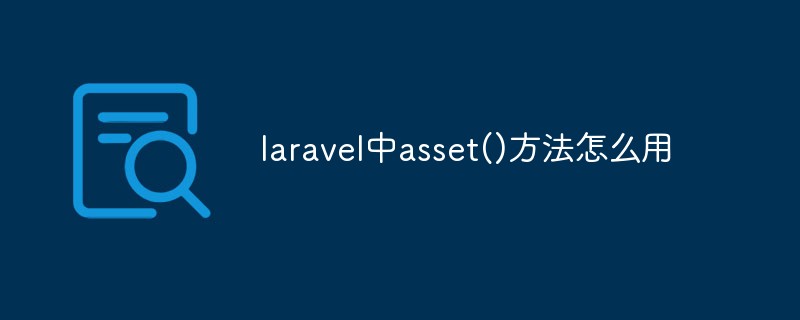这篇文章主要给大家介绍了关于Redis在Laravel项目中应用的相关资料,文中通过示例代码介绍的非常详细,对大家学习或者使用laravel具有一定的参考学习价值,需要的朋友们下面跟着小编来一起学习学习吧。
前言
本文主要给大家介绍了关于Redis在Laravel项目中的应用实例,分享出来供大家参考学习,下面话不多说了,来一起看看详细的介绍:
在初步了解Redis在Laravel中的应用 那么我们试想这样的一个应用场景 一个文章或者帖子的浏览次数的统计 如果只是每次增加一个浏览量
就到数据库新增一个数据 如果请求来那个太大这对数据库的消耗也就不言而喻了吧 那我们是不是可以有其他的解决方案
这里的解决方案就是 即使你的网站的请求量很大 那么每次增加一个访问量就在缓存中去进行更改 至于刷新Mysql数据库可以自定义为
多少分钟进行刷新一次或者访问量达到一定数量再去刷新数据库 这样数据也是准确的 效率也比直接每次刷新数据库要高出许多了
既然给出了相应的解决方案 我们就开始实施
我们以一篇帖子的浏览为例 我们先去创建对应的控制器
$ php artisan make:controller PostController
再去生成需要用到的 Model
$ php artisan make:model Post -m
填写posts的迁移表的字段内容
Schema::create('posts', function (Blueprint $table) {
$table->increments('id');
$table->string("title");
$table->string("content");
$table->integer('view_count')->unsigned();
$table->timestamps();
});还有就是我们测试的数据的Seeder填充数据
$factory->define(App\Post::class, function (Faker\Generator $faker) {
return [
'title' => $faker->sentence,
'content' => $faker->paragraph,
'view_count' => 0
];
});定义帖子的访问路由
Route::get('/post/{id}', 'PostController@showPost');当然我们还是需要去写我们访问也就是浏览事件的(在app/providers/EventServiceProvider中定义)
protected $listen = [ 'App\Events\PostViewEvent' => [ // 'App\Listeners\EventListener', 'App\Listeners\PostEventListener', ], ];
执行事件生成监听
$ php artisan event:generate
之前定义了相关的路由方法 现在去实现一下:
public function showPost(Request $request,$id)
{
//Redis缓存中没有该post,则从数据库中取值,并存入Redis中,该键值key='post:cache'.$id生命时间5分钟
$post = Cache::remember('post:cache:'.$id, $this->cacheExpires, function () use ($id) {
return Post::whereId($id)->first();
});
//获取客户端请求的IP
$ip = $request->ip();
//触发浏览次数统计时间
event(new PostViewEvent($post, $ip));
return view('posts.show', compact('post'));
}这里看的出来就是以Redis作为缓存驱动 同样的 会获取获取的ip目的是防止同一个ip多次刷新来增加浏览量
同样的每次浏览会触发我们之前定义的事件 传入我们的post和id参数
Redis的key的命名以:分割 这样可以理解为一个层级目录 在可视化工具里就可以看的很明显了
接下来就是给出我们的posts.show的视图文件
<html lang="en">
<head>
<meta charset="utf-8">
<meta http-equiv="X-UA-Compatible" content="IE=edge">
<meta name="viewport" content="width=device-width, initial-scale=1">
<title>Bootstrap Template</title>
<!-- 新 Bootstrap 核心 CSS 文件 -->
<link rel="stylesheet" href="//cdn.bootcss.com/bootstrap/3.3.5/css/bootstrap.min.css" rel="external nofollow" >
<style>
html,body{
width: 100%;
height: 100%;
}
*{
margin: 0;
border: 0;
}
.jumbotron{
margin-top: 10%;
}
.jumbotron>span{
margin: 10px;
}
</style>
</head>
<body>
<p class="container">
<p class="row">
<p class="col-xs-12 col-md-12">
<p class="jumbotron">
<h1>Title:{{$post->title}}</h1>
<span class="glyphicon glyphicon-eye-open" aria-hidden="true"> {{$post->view_count}} views</span>
<p>Content:{{$post->content}}</p>
</p>
</p>
</p>
</p>
<!-- jQuery文件-->
<script src="//cdn.bootcss.com/jquery/1.11.3/jquery.min.js"></script>
<!-- 最新的 Bootstrap 核心 JavaScript 文件 -->
<script src="//cdn.bootcss.com/bootstrap/3.3.5/js/bootstrap.min.js"></script>
<script>
</script>
</body>
</html>初始化我们的事件就是接收一下这些参数即可
class PostViewEvent
{
use Dispatchable, InteractsWithSockets, SerializesModels;
public $ip;
public $post;
/**
* PostViewEvent constructor.
* @param Post $post
* @param $ip
*/
public function __construct(Post $post, $ip)
{
$this->post = $post;
$this->ip = $ip;
}
/**
* Get the channels the event should broadcast on.
*
* @return Channel|array
*/
public function broadcastOn()
{
return new PrivateChannel('channel-name');
}
}最主要的还是编写我们的监听事件:
class PostEventListener
{
/**
* 一个帖子的最大访问数
*/
const postViewLimit = 20;
/**
* 同一用户浏览同一个帖子的过期时间
*/
const ipExpireSec = 200;
/**
* Create the event listener.
*
*/
public function __construct()
{
}
/**
* @param PostViewEvent $event
*/
public function handle(PostViewEvent $event)
{
$post = $event->post;
$ip = $event->ip;
$id = $post->id;
//首先判断下ipExpireSec = 200秒时间内,同一IP访问多次,仅仅作为1次访问量
if($this->ipViewLimit($id, $ip)){
//一个IP在300秒时间内访问第一次时,刷新下该篇post的浏览量
$this->updateCacheViewCount($id, $ip);
}
}
/**
* 限制同一IP一段时间内得访问,防止增加无效浏览次数
* @param $id
* @param $ip
* @return bool
*/
public function ipViewLimit($id, $ip)
{
$ipPostViewKey = 'post:ip:limit:'.$id;
//Redis命令SISMEMBER检查集合类型Set中有没有该键,Set集合类型中值都是唯一
$existsInRedisSet = Redis::command('SISMEMBER', [$ipPostViewKey, $ip]);
//如果集合中不存在这个建 那么新建一个并设置过期时间
if(!$existsInRedisSet){
//SADD,集合类型指令,向ipPostViewKey键中加一个值ip
Redis::command('SADD', [$ipPostViewKey, $ip]);
//并给该键设置生命时间,这里设置300秒,300秒后同一IP访问就当做是新的浏览量了
Redis::command('EXPIRE', [$ipPostViewKey, self::ipExpireSec]);
return true;
}
return false;
}
/**
* 达到要求更新数据库的浏览量
* @param $id
* @param $count
*/
public function updateModelViewCount($id, $count)
{
//访问量达到300,再进行一次SQL更新
$post = Post::find($id);
$post->view_count += $count;
$post->save();
}
/**
* 不同用户访问,更新缓存中浏览次数
* @param $id
* @param $ip
*/
public function updateCacheViewCount($id, $ip)
{
$cacheKey = 'post:view:'.$id;
//这里以Redis哈希类型存储键,就和数组类似,$cacheKey就类似数组名 如果这个key存在
if(Redis::command('HEXISTS', [$cacheKey, $ip])){
//哈希类型指令HINCRBY,就是给$cacheKey[$ip]加上一个值,这里一次访问就是1
$save_count = Redis::command('HINCRBY', [$cacheKey, $ip, 1]);
//redis中这个存储浏览量的值达到30后,就去刷新一次数据库
if($save_count == self::postViewLimit){
$this->updateModelViewCount($id, $save_count);
//本篇post,redis中浏览量刷进MySQL后,就把该篇post的浏览量清空,重新开始计数
Redis::command('HDEL', [$cacheKey, $ip]);
Redis::command('DEL', ['laravel:post:cache:'.$id]);
}
}else{
//哈希类型指令HSET,和数组类似,就像$cacheKey[$ip] = 1;
Redis::command('HSET', [$cacheKey, $ip, '1']);
}
}
}最后可以通过我们的工具查看具体效果

以上是Redis在Laravel项目中的实际应用实例的详细内容。更多信息请关注PHP中文网其他相关文章!
 laravel单点登录方法详解Jun 15, 2022 am 11:45 AM
laravel单点登录方法详解Jun 15, 2022 am 11:45 AM本篇文章给大家带来了关于laravel的相关知识,其中主要介绍了关于单点登录的相关问题,单点登录是指在多个应用系统中,用户只需要登录一次就可以访问所有相互信任的应用系统,下面一起来看一下,希望对大家有帮助。
 一起来聊聊Laravel的生命周期Apr 25, 2022 pm 12:04 PM
一起来聊聊Laravel的生命周期Apr 25, 2022 pm 12:04 PM本篇文章给大家带来了关于laravel的相关知识,其中主要介绍了关于Laravel的生命周期相关问题,Laravel 的生命周期从public\index.php开始,从public\index.php结束,希望对大家有帮助。
 laravel中guard是什么Jun 02, 2022 pm 05:54 PM
laravel中guard是什么Jun 02, 2022 pm 05:54 PM在laravel中,guard是一个用于用户认证的插件;guard的作用就是处理认证判断每一个请求,从数据库中读取数据和用户输入的对比,调用是否登录过或者允许通过的,并且Guard能非常灵活的构建一套自己的认证体系。
 laravel中asset()方法怎么用Jun 02, 2022 pm 04:55 PM
laravel中asset()方法怎么用Jun 02, 2022 pm 04:55 PMlaravel中asset()方法的用法:1、用于引入静态文件,语法为“src="{{asset(‘需要引入的文件路径’)}}"”;2、用于给当前请求的scheme前端资源生成一个url,语法为“$url = asset('前端资源')”。
 实例详解laravel使用中间件记录用户请求日志Apr 26, 2022 am 11:53 AM
实例详解laravel使用中间件记录用户请求日志Apr 26, 2022 am 11:53 AM本篇文章给大家带来了关于laravel的相关知识,其中主要介绍了关于使用中间件记录用户请求日志的相关问题,包括了创建中间件、注册中间件、记录用户访问等等内容,下面一起来看一下,希望对大家有帮助。
 laravel中间件基础详解May 18, 2022 am 11:46 AM
laravel中间件基础详解May 18, 2022 am 11:46 AM本篇文章给大家带来了关于laravel的相关知识,其中主要介绍了关于中间件的相关问题,包括了什么是中间件、自定义中间件等等,中间件为过滤进入应用的 HTTP 请求提供了一套便利的机制,下面一起来看一下,希望对大家有帮助。
 laravel路由文件在哪个目录里Apr 28, 2022 pm 01:07 PM
laravel路由文件在哪个目录里Apr 28, 2022 pm 01:07 PMlaravel路由文件在“routes”目录里。Laravel中所有的路由文件定义在routes目录下,它里面的内容会自动被框架加载;该目录下默认有四个路由文件用于给不同的入口使用:web.php、api.php、console.php等。
 laravel中的scope怎么用Jun 09, 2022 am 11:15 AM
laravel中的scope怎么用Jun 09, 2022 am 11:15 AM在laravel中,scope用于处理模型中的数据,在模型中可以定义scope开头方法,这类方法可以通过模型直接调用,被称为查询作用域,语法为“public function scope首字母大写单词($query){...}”。


热AI工具

Undresser.AI Undress
人工智能驱动的应用程序,用于创建逼真的裸体照片

AI Clothes Remover
用于从照片中去除衣服的在线人工智能工具。

Undress AI Tool
免费脱衣服图片

Clothoff.io
AI脱衣机

AI Hentai Generator
免费生成ai无尽的。

热门文章

热工具

VSCode Windows 64位 下载
微软推出的免费、功能强大的一款IDE编辑器

螳螂BT
Mantis是一个易于部署的基于Web的缺陷跟踪工具,用于帮助产品缺陷跟踪。它需要PHP、MySQL和一个Web服务器。请查看我们的演示和托管服务。

mPDF
mPDF是一个PHP库,可以从UTF-8编码的HTML生成PDF文件。原作者Ian Back编写mPDF以从他的网站上“即时”输出PDF文件,并处理不同的语言。与原始脚本如HTML2FPDF相比,它的速度较慢,并且在使用Unicode字体时生成的文件较大,但支持CSS样式等,并进行了大量增强。支持几乎所有语言,包括RTL(阿拉伯语和希伯来语)和CJK(中日韩)。支持嵌套的块级元素(如P、DIV),

Dreamweaver CS6
视觉化网页开发工具

SublimeText3 Mac版
神级代码编辑软件(SublimeText3)





